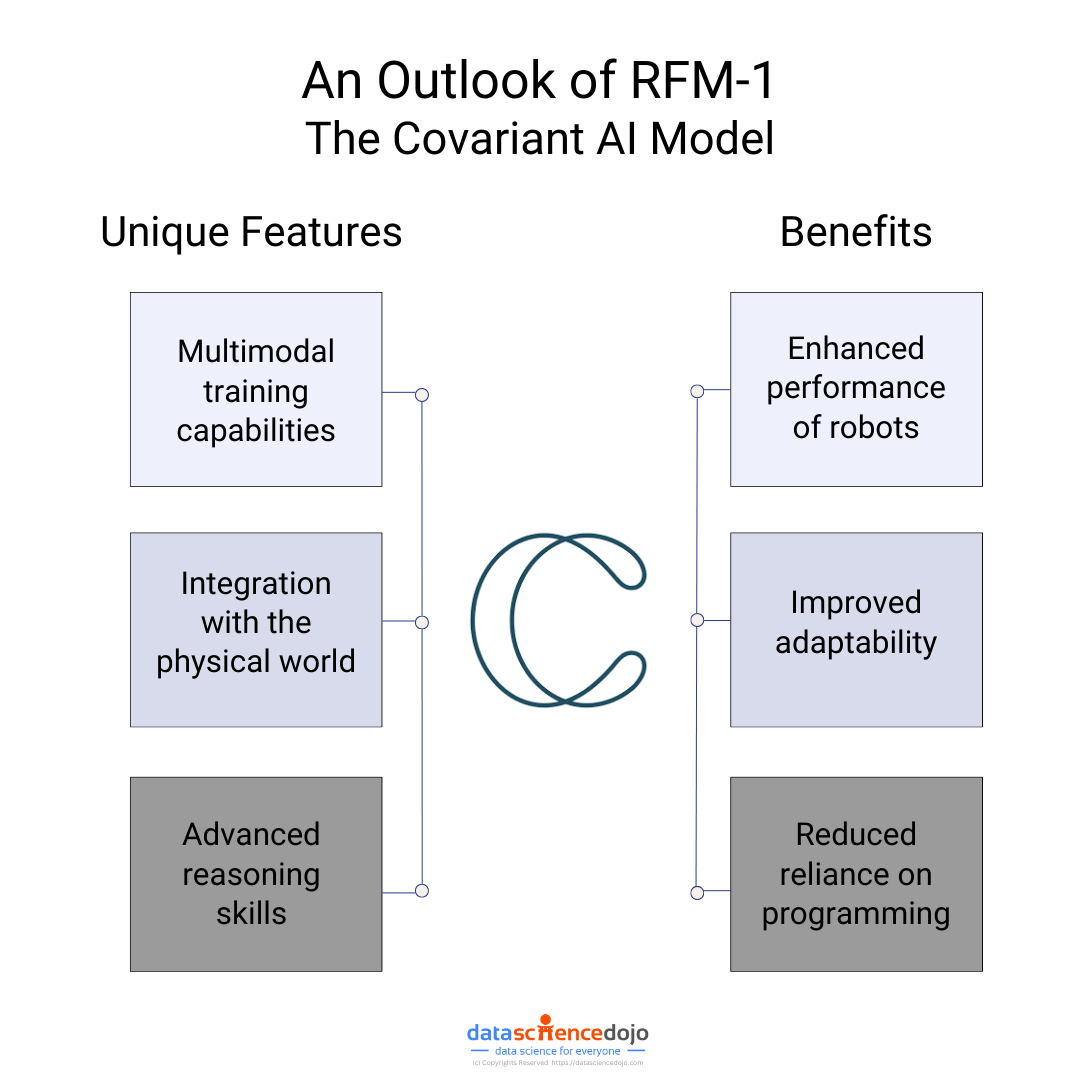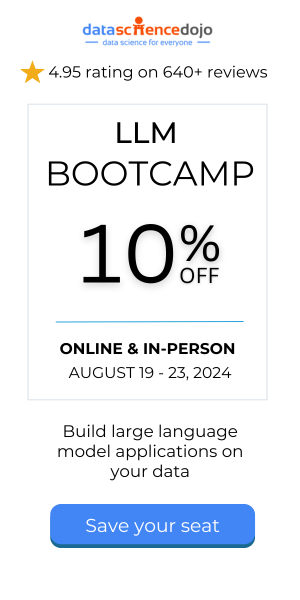Covariant AI has emerged in the news with the introduction of its new model called RFM-1. The development has created a new promising avenue of exploration where humans and robots come together. With its progress and successful integration into real-world applications, it can unlock a new generation of AI advancements.
Explore the potential of generative AI and LLMs for non-profit organizations
In this blog, we take a closer look at the company and its new model.
What is Covariant AI?
The company develops AI-powered robots for warehouses and distribution centers. It spun off in 2017 from OpenAI by its ex-research scientists, Peter Chen and Pieter Abbeel. Its robots are powered by a technology called the Covariant Brain, a machine-learning (ML) model to train and improve robots’ functionality in real-world applications.
The company has recently launched a new AL model that takes up one of the major challenges in the development of robots with human-like intelligence. Let’s dig deeper into the problem and its proposed solution.
What was the challenge?
Today’s digital world is heavily reliant on data to progress. Since generative AI is an important aspect of this arena, data and information form the basis of its development as well. So the development of enhanced functionalities in robots, and the appropriate training requires large volumes of data.
The limited amount of available data poses a great challenge, slowing down the pace of progress. It was a result of this challenge that OpenAI disbanded its robotics team in 2021. The data was insufficient to train the movements and reasoning of robots appropriately.
However, it all changed when Covariant AI introduced its new AI model.
Understanding the Covariant AI model
The company presented the world with RFM-1, its Robotics Foundation Model as a solution and a step ahead in the development of robotics. Integrating the characteristics of large language models (LLMs) with advanced robotic skills, the model is trained on a real-world dataset.
Covariant used its years of data from its AI-powered robots already operational in warehouses. For instance, the item-picking robots working in the warehouses of Crate & Barrel and Bonprix. With these large enough datasets, the challenge of data limitation was addressed, enabling the development of RFM-1.
Since the model leverages real-world data of robots operating within the industry, it is well-suited to train the machines efficiently. It brings together the reasoning of LLMs and the physical dexterity of robots which results in human-like learning of the robots.

Unique features of RFM-1
The introduction of the new AI model by Covariant AI has definitely impacted the trajectory of future developments in generative AI. While we still have to see how the journey progresses, let’s take a look at some important features of RFM-1.
Multimodal training capabilities
The RFM-1 is designed to deal with five different types of input: text, images, video, robot instructions, and measurements. Hence, it is more diverse in data processing than a typical LLM that is primarily focused on textual data input.
Integration with the physical world
Unlike your usual LLMs, this AI model engages with the physical world around it through a robot. The multimodal data understanding enables it to understand the surrounding environment in addition to the language input. It enables the robot to interact with the physical world.
Advanced reasoning skills
The advanced AI model not only processes the available information but engages with it critically. Hence, RFM-1 has enhanced reasoning skills that provide the robot with a better understanding of situations and improved prediction skills.
Benefits of RFM-1
The benefits of the AI model align with its unique features. Some notable advantages of this development are:
Enhanced performance of robots
The multimodal data enables the robots to develop a deeper understanding of their environments. It results in their improved engagement with the physical world, allowing them to perform tasks more efficiently and accurately. It will directly result in increased productivity and accuracy of business operations where the robots operate.
Improved adaptability
Based on the model’s improved reasoning skills, it ensure that the robots are equipped to understand, learn, and reason with new data. Hence, the robots become more versatile and adaptable to their changing environment.
Reduced reliance on programming
RFM-1 is built to constantly engage with and learn from its surroundings. Since it enables the robot to comprehend and reason with the changing input data, the reliance on pre-programmed instructions is reduced. The process of development and deployment becomes simpler and faster.
Hence, the multiple new features of RFM-1 empower it to create useful changes in the world of robotic development. Here’s a short video from Covariant AI, explaining and introducing their new AI model.
The future of RFM-1
The future of RFM-1 looks very promising, especially within the world of robotics. It has opened doors to a completely new possibility of developing a range of flexible and reliable robotic systems.
Covariant AI has taken the first step towards empowering commercial robots with an enhanced understanding of their physical world and language. Moreover, it has also introduced new avenues to integrate LLMs within the arena of generative AI applications.
Read about the top 10 industries that can benefit from LLMs







